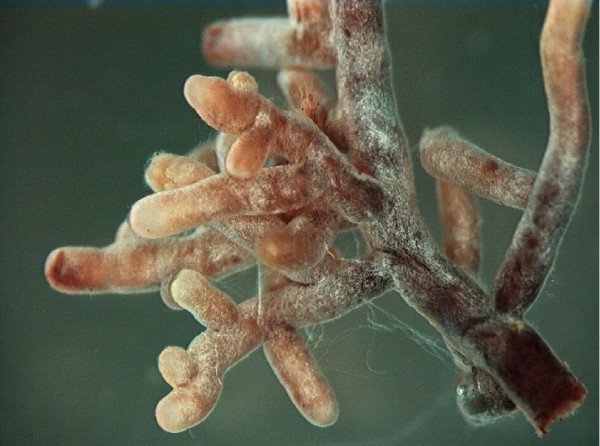Mycorrhizal fungi are a naturally occurring soil borne fungus that can have a highly beneficial symbiotic relationship with a host plant. In fact the word ‘mycorrhiza’ itself is made up of two Greek words meaning ‘fungus’ and ‘root’. This ‘symbiotic’ relationship is one in which both host plant and fungus receive some benefit.
From this mycelium structure the host plant is able to not only extend its reach by proxy; it will also receive essential nutrients and a greater availability of vital water. In effect the mycelium structure acts as an extensive secondary root system, not only promoting healthy and sustainable growth for the host plant but also enabling it to withstand the stress of drought and prevent some of the soil-borne fungal pathogens such as Phytophthora sp.and Armillaria sp. entering the roots. The largest benefit to the host plant is the improved acquisition of the macronutrient phosphorus which is often in very short supply in natural soils. While phosphorus-rich fertilisers are widely used in cultivated ground, mycorrhizas are generally believed to be crucial in gathering this element in uncultivated soils. Incredibly this would mean that without this symbiotic relation neither mycorrhizal fungi nor their host plants would be able to survive in many uncultivated situations. Furthermore it is also believed that Mycorrhizas also seem to have some benefit with regards to protection against root diseases.
Although the use of mycorrhizal fungi has been a relative newcomer to modern horticultural practice, examination of fossilised plants and studies of specific DNA sequences have shown that this symbiotic relationship has been in existence for over 400 million years.
Main image credit - Ellen Larsson, Source R. Henrik Nilsson, Erik Kristiansson, Martin Ryberg, Karl-Henrik Larsson (2005). "Approaching the taxonomic affiliation of unidentified sequences in public databases – an example from the mycorrhizal fungi". BMC Bioinformatics 6: 178. DOI:10.1186/1471-2105-6-178 and licensed under the Creative Commons Attribution 2.5 Generic license
For related articles click onto the following links:
RHS: MYCORRHIZAL FUNGI?
WHAT ARE PLANT MACRONUTRIENTS AND MICRONUTRIENTS
WHAT CAUSES BLUE HYDRANGEAS TO TURN PINK?
WHAT IS CHLOROSIS?
WHAT IS AN EPIPHYTE?
WHAT IS A WORMERY?








No comments:
Post a Comment